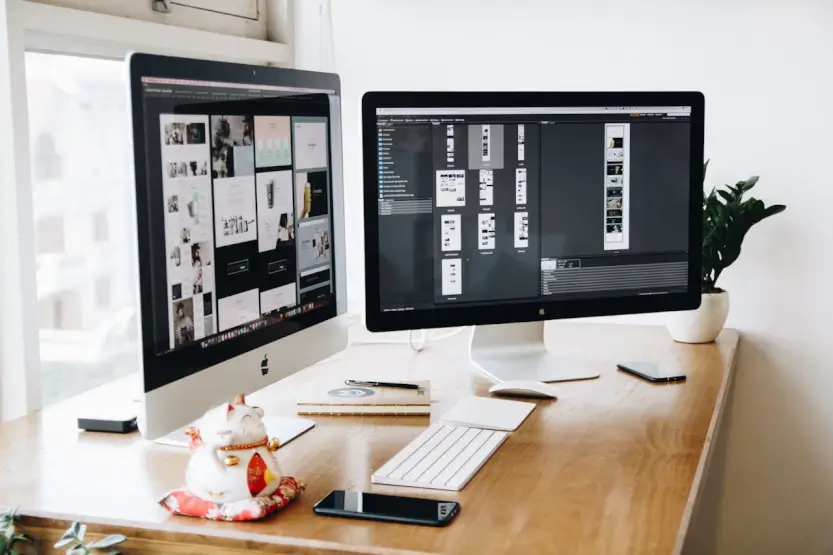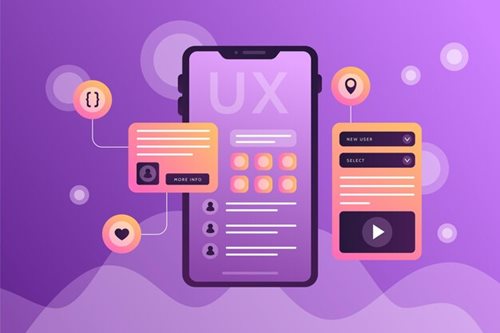Get your free consultation today!
Share with your Colleagues
Categories
ROI Calculator
Moonstone Interactive is the only San Francisco Bay Area web design firm and Internet Marketing expert that offers a free online ROI Calculator
Author: Steve Herz
.webp?ext=.webp)
Table of Contents
- Exploring GUI: Basics and Beyond
- The Role of GUI Designers
- Choosing the Best Development Tools
- Prioritizing UX in Web Development
- Mobile Design Must-Dos
- GUI: More Than Looks
- Conclusion
In a landscape where web technologies rapidly evolve, grasping the core principles of UX web development and understanding what GUI means can significantly boost your capability to create effective and user-friendly digital environments. Whether you're a novice hoping to delve into the basics or an experienced graphical user interface designer looking to polish your skills, this article offers practical advice to refine your design strategy.
Exploring GUI: Basics and Beyond
What exactly is a GUI? Standing for Graphical User Interface, this essential component of modern web design allows users to interact with digital products through graphical elements like icons and buttons instead of text commands. For those wondering, "What does GUI mean?" It's helpful to consider it the bridge between your website's operations and how users control these operations visually.
GUI simplifies interaction, making technology accessible even to those without a technical background. For web developers, understanding GUI involves more than recognizing its definition; it requires insight into how you organize elements to ensure intuitive navigation and effortless interaction. By integrating responsive design, accessible colors, and clear iconography, you can craft interfaces that look good and function perfectly across different platforms and devices.
The Role of GUI Designers
As a graphical user interface designer, one's role extends beyond making a site look attractive. It involves profoundly understanding user behavior and preferences to create logical and efficient interfaces. These designers balance aesthetic appeal with functionality, ensuring users can navigate your site quickly and without frustration.
Such professionals must be adept in various design tools and principles to communicate through visuals effectively. This skill includes creating a coherent design language, ensuring consistency across the platform, and designing with an eye for scalability. The goal is to create an environment where users feel comfortable and engaged, making interacting with your digital product a positive experience.
Choosing the Best Development Tools
Having the best web development tool can make all the difference when building websites. These tools streamline complex processes and enhance productivity, allowing developers to focus more on creative solutions than repetitive tasks. Tools like Adobe XD for UI design and Visual Studio Code for coding are favorites among professionals for their robust features and user-friendly interfaces.
In addition, platforms like GitHub offer version control to manage changes and collaborate with others. At the same time, frameworks like Bootstrap can speed up the responsive design process. Choosing the right tools depends on your project needs, team dynamics, and the specific functionalities you want to emphasize in your development process.
Prioritizing UX in Web Development
UX web development focuses on optimizing the user experience to make websites usable and enjoyable. It's about anticipating user needs and ensuring the website facilitates them through its design and functionality. The result includes streamlined navigation, fast loading times, and content that is easy to digest and engage with.
UX designers must conduct thorough user research and testing to identify potential pain points and opportunities for improvement. This iterative process helps refine the design until it meets the high standards of today's users, ensuring that the website attracts visitors and keeps them engaged.

Mobile Design Must-Dos
Adhering to mobile design best practices is crucial in a world where more smartphone users access the internet than any other device. Mobile design involves designing for smaller screens and touch-based interactions, ensuring mobile users can navigate your site as quickly as desktop users. Key practices include:
- Use large, finger-friendly buttons.
- Implementing responsive layouts that adjust to various screen sizes.
- Optimizing images and media to reduce load times.
Responsive design ensures that your website communicates consistantly providing a consistent and functional user experience regardless of the device. This user experience is vital to retaining visitors and converting them into regular users or customers.
GUI: More Than Looks
Remembering that GUI means creating an engaging and interactive experience that transcends mere visual appeal is essential. Each button, slider, or interactive element must be crafted with the user's journey in mind, ensuring each interaction is intuitive and contributes to a seamless experience.
Conclusion
Web design can be fulfilling and productive with the right approach and tools. By understanding the roles of UX web development and graphical user interface designers and utilizing the best web development tool available, developers can ensure that their websites are functional, engaging, and responsive to user needs.


